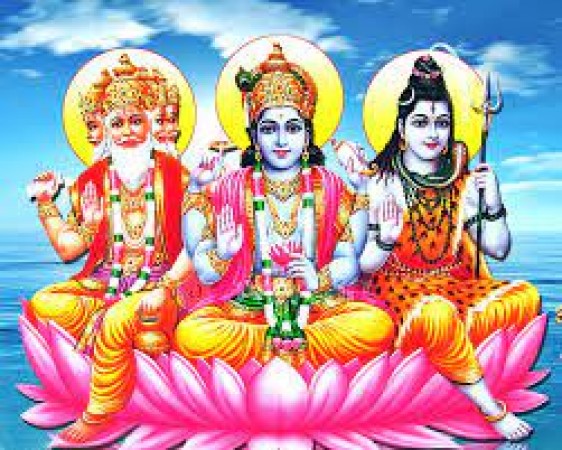
In the rich tapestry of Hindu mythology and spirituality, the concept of Trimurti holds a significant place. Trimurti, meaning "three forms," refers to the divine trinity of gods who represent the fundamental aspects of the Supreme Reality (Brahman). These three deities, Brahma, Vishnu, and Shiva, play pivotal roles in the cycle of creation, preservation, and destruction, respectively. The Trimurti, consisting of Brahma, Vishnu, and Shiva, stands as a fundamental concept in Hinduism, representing the trinity of creation, preservation, and destruction. These three divine entities symbolize the dynamic forces of the cosmos and guide believers on the path of spiritual understanding and enlightenment. As devotees contemplate the roles and attributes of the Trimurti, they gain insight into the profound mysteries of existence and the interconnectedness of all things in the universe.
1. Brahma - The Creator: Brahma, the first member of the Trimurti, is revered as the creator of the universe. He is depicted with four heads, each facing a cardinal direction, symbolizing his vast knowledge and ability to oversee the four corners of the cosmos. However, despite his role as the creator, Brahma is not as widely worshipped as Vishnu and Shiva.
The legend goes that Brahma was born from a lotus that emerged from the navel of Lord Vishnu while he was in a state of cosmic sleep. His consort is Saraswati, the goddess of wisdom and learning, with whom he undertakes the task of shaping the universe through the power of his divine knowledge.
2. Vishnu - The Preserver: Vishnu, the second member of the Trimurti, is regarded as the preserver and sustainer of the universe. He is often depicted with blue skin and four arms, holding a conch shell, a discus (chakra), a mace, and a lotus flower. Vishnu is known for his various incarnations (avatars), the most famous of which are Rama and Krishna.
According to Hindu mythology, whenever the balance between good and evil in the world is disrupted, Vishnu descends in different forms to restore harmony and protect the righteous. His compassion and benevolence towards devotees make him one of the most revered deities in Hinduism.
3. Shiva - The Destroyer:Shiva, the third member of the Trimurti, embodies the aspect of destruction or dissolution of the universe. He is often depicted with ash smeared on his body, a crescent moon on his matted locks, a third eye on his forehead, and a snake coiled around his neck. Shiva is a complex deity with diverse attributes, representing both destructive forces and regenerative powers.
While Shiva's role as the destroyer might seem negative, it is crucial for the cycle of creation and preservation to continue. The destruction initiated by Shiva paves the way for new beginnings and transformation, signifying the impermanence of the material world.
The Trimurti represents the unity in diversity, emphasizing that each of the three deities is an essential aspect of the Supreme Reality (Brahman). They work in harmony to maintain cosmic order and balance. The dynamic interplay between creation, preservation, and destruction serves as a reminder of the cyclical nature of existence and the impermanence of the physical world. Hindu devotees revere the Trimurti gods and worship them collectively or individually, depending on personal preferences and spiritual inclinations. Many Hindu temples are dedicated to each of the Trimurti deities, and their festivals are celebrated with great enthusiasm throughout the year.
Also read - Kakbhushundi: The Wise Crow from Hindu Mythology